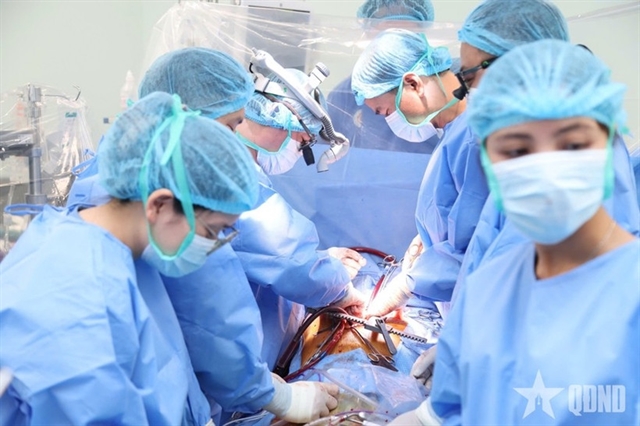 Society
Society

Most people are terrified by snakes, but Nguyễn Văn Nhuần is different. The farmer in the central province of Hà Tĩnh breeds venomous snakes in his home, so he’d better not be afraid.
 |
| Snakes in Nhuần’s facility. Photo baohatinh.vn |
HÀ TĨNH — Most people are terrified by snakes, but Nguyễn Văn Nhuần is different.
The farmer in the central province of Hà Tĩnh breeds venomous snakes in his home, so he’d better not be afraid.
Based in Cẩm Xuyên District, Nhuần is raising 200 mature snakes, some to be sold for their meat and others for eggs, according to a report on local Hà Tĩnh newspaper.
“The snakes earn my family net profit of about VNĐ250 million (US$10,700) a year. The earnings help us to get out of poverty,” Nhuận said.
“Cobras are fiercer than other snake species. The snake is venomous as well. But once you know how to tame it, the snake is not scary.”
Nhuần runs the facility with his son, Nguyễn Văn Thịnh, who had the idea of raising snakes. Earlier, Thịnh worked abroad as a guest worker and heard much about the snake trade.
He returned home and worked with his father to learn the snake raising techniques in Vĩnh Phúc Province at a village with a long tradition of raising snakes. In October 2014, the father and son took a loan of VNĐ100 million to build a snake farm at their house.
The duo built 18 cages for snakes on 80sq. m of the family’s garden, using concrete and steel mesh to keep the snakes inside.
“The key is to keep other family members and neighbours safe from the snakes. We reinforce the cages often to ensure no snakes can escape from the cages,” Thịnh said.
While Vietnamese law forbids the caging and breeding of wild animals listed for protection, Nhuần’s snakes are not listed and his enterprise has been approved by local authorities.
Nguyễn Huy Thông, an official in Cẩm Quang Commune, where Nhuần’s family is based, told the newspaper that the commune had plans to encourage locals to learn from Nhuần.
“Raising snakes is profitable and the waste from the raising facility is not large enough to pollute the environment in the neighbourhood,” Thông said, adding that Nhuần’s facility has helped to reduce the number of rats in local fields as they use the animals to feed the snakes.
In rural areas across Việt Nam, rats are one of the biggest threats to rice production.
According to Nhuần and Thịnh, raising snakes is not difficult once you’ve overcome the fear of being attacked by the creature. They are also willing to supply baby snakes to others in the commune and train them how to take care of the animals.
“Snakes don’t require a lot of food and they rarely get diseases,” said Nhuần. According to the middle-aged man, snakes eat once every two days in the sunny season and once a month during the winter.
Each snake eats half a rat in a sitting, while also enjoying nibbling on toads and frogs.
Nhuần said snakes lay eggs twice a year, during lunar May and July, with about 15 to 20 eggs each. He sells mature snakes for meat at VNĐ700,000 a kilogramme while eggs cost VNĐ120,000 each.
He said his facility, which is home to 450 snakes, can’t supply enough meat or eggs to satisfy demand.
The duo plans to build some 350 more cages to expand the facility. “Raising snakes is very profitable and we want more areas to breed them in an attempt to meet the increasing demand in both snakes for meat and their eggs,” he said. — VNS
 |
| Nhuần grabs little snakes hatched from eggs in his snake raising facility. Photo baohatinh.vn |




